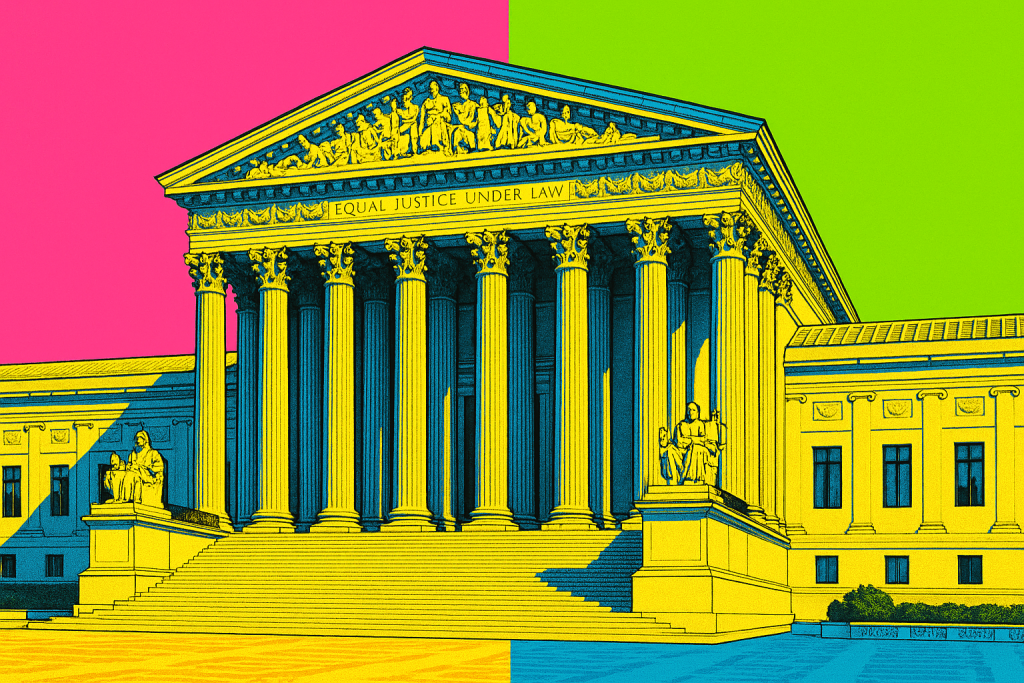The Federal Government's fiscal year begins on October 1, as does the Supreme Court's term. The new term always begins with a "long conference" that considers certiorari petitions briefed over the court's summer break. The conference was held on September 29, 2025, and we will soon be hearing which of these cases (if any) will be granted certiorari.
Patent
MSN Pharmaceuticals, Inc. v. Novartis Pharmaceuticals Corp., No. 25-225
This case addresses whether courts may consider after-arising technology when evaluating patent validity under 35 U.S.C. § 112(a)'s written description and enablement requirements. Novartis's patent for Entresto (a blockbuster heart failure drug generating over $3 billion annually) claimed a combination of valsartan and sacubitril, but the actual commercial product uses a form discovered four years after the patent filing that was not particularly described in the original specification. The Federal Circuit held that later-discovered technology cannot invalidate patents, creating some tension with precedents like The Incandescent Lamp Patent, 159 U.S. 465 (1895), and Amgen Inc. v. Sanofi, 598 U.S. 594 (2023), which seem to require patents to enable the full scope of their claims.
Gesture Technology Partners, LLC v. Apple Inc., No. 24-1280 and 24-1281
These cases questions whether the PTAB has constitutional authority under Article III and the public rights doctrine to conduct inter partes review proceedings on patents that expired before the IPR petition was filed. Gesture Technology's camera-based sensing patents expired in 2020, but Apple filed an IPR petition in May 2021, and the PTAB subsequently invalidated the claims, extinguishing Gesture's ability to collect damages for past infringement. The Federal Circuit held that PTAB has jurisdiction over expired patents because patent owners retain limited rights (damages for past infringement), but Gesture argues that once exclusionary rights expire, only Article III courts can adjudicate retrospective damage claims. Gesture also argues that Apple should be estopped under 35 U.S.C. § 315(e)(1) because Apple is a member of Unified Patents and should be treated as a real party in interest or privy, but the Federal Circuit held Gesture forfeited this argument.
R.J. Reynolds Vapor Company v. Altria Client Services LLC, No. 25-158
This case addresses whether the Federal Circuit's "built-in apportionment" exception violates Garretson v. Clark, 111 U.S. 120 (1884), which requires patentees to "in every case give evidence tending to separate or apportion the defendant's profits and the patentee's damages between the patented feature and the unpatented features." After a 2022 jury trial, Reynolds was found to infringe Altria's e-cigarette patents and ordered to pay $95.2 million based on a 5.25% royalty rate calculated using a lump-sum license. The Federal Circuit majority affirmed in December 2024, finding sufficient evidence of "built-in apportionment" in the comparable license, but Reynolds argues this undermines the fundamental requirement to separate the patent's contribution from unpatented features. Reynolds alternatively requests a grant-vacate-remand in light of the Federal Circuit's intervening May 2025 en banc decision in EcoFactor, Inc. v. Google LLC, 137 F.4th 1333 (Fed. Cir. 2025), which vacated a $20 million damages award and held district courts must rigorously assess damages expert testimony regarding comparable licenses.
United Services Automobile Association v. PNC Bank N.A., No. 25-149
This case presents an administrative law question about whether the PTAB's IPR decision was arbitrary and capricious under the Administrative Procedure Act (APA) when it reached different conclusions than prior PTAB proceedings involving "saliently similar facts" but different parties. USAA owns patents covering mobile check deposit technology, and when Wells Fargo challenged these patents in IPR using functionally identical prior art, the PTAB denied the challenges and found claims not obvious, leading to a $200 million jury award against Wells Fargo in 2019.
To continue reading, become a Patently-O member. Already a member? Simply log in to access the full post.
